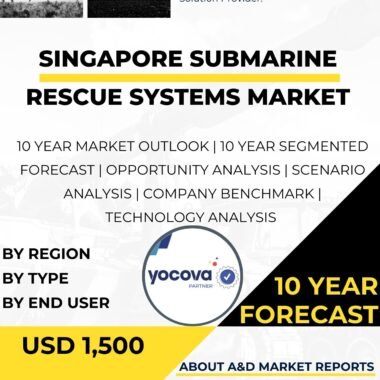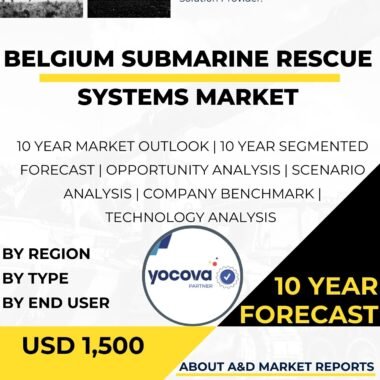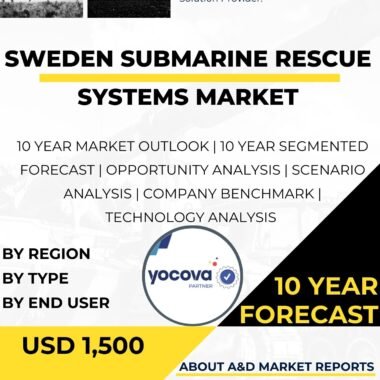Description
The China submarine rescue systems market has witnessed significant growth and development in recent years. Submarine rescue systems play a critical role in ensuring the safety and survival of submariners in the event of a submarine accident or emergency. This market analysis provides an overview of the China submarine rescue systems market, including key players, market drivers, challenges, and future prospects.
The China submarine rescue systems market is characterized by the presence of both domestic and international players. Domestic companies, such as China Shipbuilding Industry Corporation (CSIC), China State Shipbuilding Corporation (CSSC), and China Rescue and Salvage Bureau (CRSB), have made substantial contributions to the development and production of submarine rescue systems. These companies have invested in research and development to enhance the capabilities and performance of their systems to meet the specific requirements of the Chinese Navy.
International players, including renowned defense technology manufacturers such as James Fisher and Sons plc, JFD Ltd., and Phoenix International Holdings Inc., have also established collaborations and partnerships in China. These collaborations have facilitated technology transfer, knowledge exchange, and joint development programs, contributing to the advancement of submarine rescue capabilities in China.
Firstly, China’s focus on enhancing its naval capabilities and expanding its submarine fleet has been a primary driver. As China continues to develop its submarine force, the need for effective submarine rescue systems becomes paramount to ensure the safety of submariners and protect national security interests. The growth of the submarine fleet drives the demand for advanced submarine rescue systems in China.
Secondly, the increasing importance of maritime security and the potential for submarine accidents or emergencies have fueled the demand for submarine rescue systems. As submarines operate in challenging and potentially hazardous environments, the risk of accidents, equipment failures, or incidents that require emergency evacuations arises. Having robust submarine rescue capabilities is crucial to address these scenarios and ensure the safe recovery of submariners.
Technological advancements have played a crucial role in the growth of the China submarine rescue systems market. Domestic companies have focused on developing indigenous rescue systems with advanced features and capabilities. China has made significant progress in the development of various types of submarine rescue systems, including submarine rescue vehicles (SRVs), submarine rescue chambers, and hyperbaric lifeboats.
China has successfully developed and deployed advanced submarine rescue systems, such as the CSIC ASR-600 SRV, which is capable of rescuing submariners from depths of up to 600 meters. The development of submarine rescue chambers, such as the CSSC LARS system, has improved China’s capabilities in providing a safe environment for the transfer of submariners from a disabled submarine to the rescue vessel. Additionally, hyperbaric lifeboats, such as the CRSB HLB-7, have been developed to provide a means of evacuation and life support for submariners in emergencies.
Another driver of the China submarine rescue systems market is the need for international collaboration and cooperation. Submarine rescue is a complex and challenging operation that often requires the assistance of multiple countries. China’s participation in international exercises, joint training programs, and cooperative initiatives has led to the development of interoperable submarine rescue systems and enhanced regional security cooperation.
However, the China submarine rescue systems market also faces certain challenges. One of the primary challenges is the need for continuous investment in research and development to stay ahead of evolving technologies, emerging threats, and changing operational requirements. As submarine technology advances and new types of submarines are introduced, China must invest in innovation and advanced technologies to maintain its submarine rescue capabilities.
Additionally, the market faces challenges related to international export restrictions and intellectual property rights. The development and export of submarine rescue systems are subject to strict regulations due to security concerns and the protection of sensitive technologies. This can limit market opportunities and hinder collaboration with international partners.
Looking ahead, the future prospects for the China submarine rescue systems market are promising. China’s commitment to enhancing its naval capabilities and ensuring the safety of submariners will continue to drive investments in submarine rescue systems. Ongoing research and development efforts, collaborations between domestic companies and international partners, and the integration of emerging technologies, such as advanced robotics, autonomous systems, and real-time communication systems, are expected to result in the introduction of more advanced and capable submarine rescue systems.
The integration of advanced technologies, such as unmanned underwater vehicles (UUVs) and remotely operated vehicles (ROVs), may shape the future of the market. These technologies can enhance the speed and efficiency of submarine rescue operations, enable real-time monitoring and communication, and improve the overall effectiveness of rescue missions. The development of autonomous rescue systems, such as autonomous SRVs and robotic rescue chambers, can further enhance the capabilities and autonomy of submarine rescue operations.
In conclusion, the China submarine rescue systems market has witnessed significant growth driven by the country’s focus on naval capabilities, maritime security, and technological advancement. Technological advancements, collaborations between domestic and international players, and the government’s commitment to indigenous defense capabilities have contributed to the development and deployment of advanced submarine rescue systems. Challenges related to evolving technologies, export restrictions, and intellectual property rights need to be addressed. With ongoing research and development, collaborations, and the integration of emerging technologies, the future of the China submarine rescue systems market looks promising, with opportunities for further growth, innovation, and advancements in submarine rescue capabilities.




